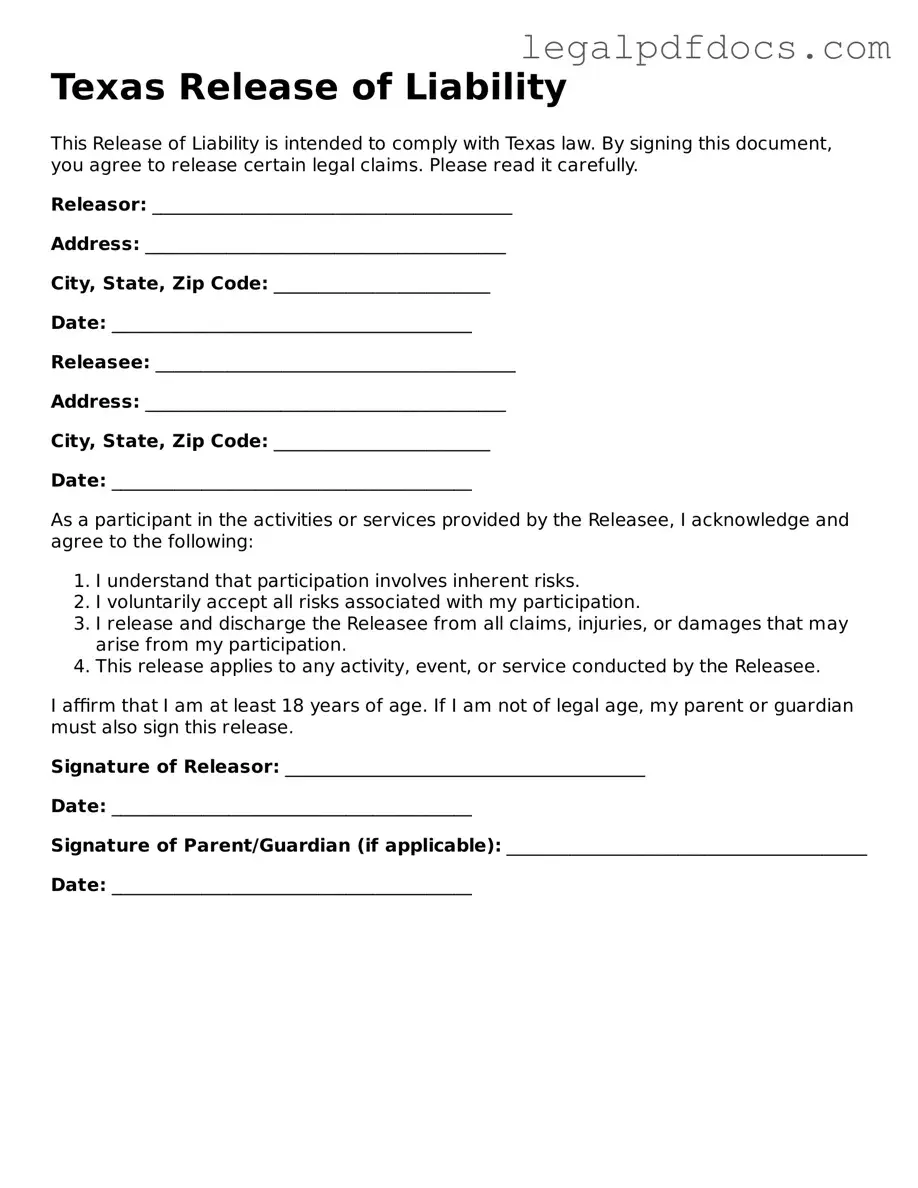In the vast landscape of Texas, where adventure often calls—from thrilling outdoor activities to engaging in community events—participants must understand the importance of protecting themselves legally. The Texas Release of Liability form serves as a crucial tool in this regard, helping individuals acknowledge the inherent risks associated with various activities. By signing this form, participants voluntarily agree to waive their right to sue for injuries or damages that may occur during these events. This document not only outlines the responsibilities of both parties involved but also emphasizes the need for clear communication and understanding of the risks at hand. Whether you’re organizing a charity run, hosting a sports tournament, or simply enjoying a day of fun at a local park, having a well-drafted Release of Liability form can provide peace of mind and foster a safe environment for everyone involved. It’s essential to recognize that while this form can protect organizers from legal claims, it also empowers participants to make informed decisions about their involvement. Understanding the nuances of this document can significantly enhance your experience, ensuring that both enjoyment and safety go hand in hand.
